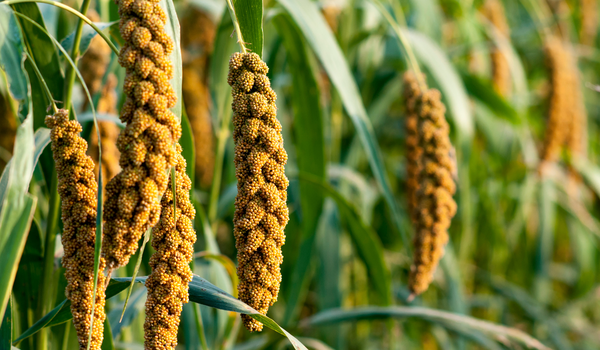Article by :- Yash Pandey
Introduction
The superfood status of millets isn’t merely a passing trend; it’s based on solid science and long-standing tradition. For centuries, Indian kitchens have made good use of millets such as bajra, ragi, foxtail, and little millet. Unlike many other crops, millets thrive in drought-prone soils and are an excellent option for sustainable agriculture. Nutritionally, millets are rich in fiber and a myriad of minerals, and both richness and diversity have positioned millets as a leading food in plant-based diets.
The Powerful Nutrients Hiding Inside Millets
· A Bountiful Source of Nutrition: Millets are rich in fiber, protein, and energy. They also brim with a variety of nutrients. Sufficient amounts of iron, calcium, magnesium, and the B vitamins fill the millets to the brim. These dietary constituents help modern individuals achieve the nutritional levels that current dietary habits may otherwise compromise.
· Gluten-free: This is a suitable product for individuals with gluten intolerance or celiac disease. It’s also suitable for meal plans that emphasize gluten-free superfoods.
· Rich in Antioxidants: Numerous types of millets, such as ragi and barnyard millet, carry antioxidant qualities that could potentially mitigate inflammation and bolster cell health throughout the body.
How Millets are used for Better Wellbeing
· The improvements in cardiovascular health, such as decreased cholesterol levels and improved blood flow, are being linked to the fibre and magnesium content of millets..
· High fiber content aids digestion, supports gut health, and promotes feeling full, so millets are perfect if you’re targeting millets for losing weight and plan for better digestive health.
· Energy and Endurance: Millets release carbohydrates and has great nutrient density which helps to sustain and be active for a normal person for a longer period of time.
The Rising Millet Demand in India
Market Leader: India leads global millet production and consumption, driven by states like Rajasthan (bajra), Karnataka (ragi), and Maharashtra (jowar). Millets are regaining popularity as healthy eating awareness grows in rural and urban diets.
· Urban Recognition & Trendiness: Urban demand ranges from millet breakfast recipes to snacks and gluten-free baked goods, boosting millet cuisine and packaged foods, signallingagri-market growth trends 2025.
· Government Support: Initiatives like the International Year of Millets, MSP, and the Midday Meal Scheme help producers access new markets.
· Value Add and Exports: Value-added products such as millet flour increase margins and support sustainable millet agriculture markets.

Advances in Millet Farming Technology
The technology used in the modern world is making the cultivation of millets not only more efficient but also resource-efficient and productive. The methods, which include precision farminga data-driven, targeted, and very smart practice of agricultural that makes the not very smart tasks of planting, worrying, and weeding much more efficient by making them resource-optimized—are used to optimize inputs of water, fertilizers, and seeds during not so smart times of the day.
ICAR leads this "Smart Millets" project, which has many bonuses. On the very first day of training, the team thoroughly educates the farmers about smart practices. During this process, they also show them how to use drone-based NDVI mapping to smartly and accurately adjust water and fertilizer inputs. Overall, they help the farmers reduce cost inputs by over 20%, while also increasing yield at the same time.
Incorporating Millets into Everyday Indian Meals
Millets can be included in everyday life in various ways, making an everyday diet more nutrient-rich and healthy. Some of the ways that millets can be used are:
· Varying amounts of millets such as bajra, ragi, little millet, foxtail millet, and kodo millet can be utilized in making common recipes like roti, dosa, upma, pulao, etc.
· Millet-based snacks such as cookies, ladoos, and biscuits are a commercial success, with many companies making millet their main source of income.
· Health-oriented products such as noodles, pasta, and energy bars are also new segments that consumers are seeking as a substitute for proteins and as a source of plant-based proteins.
Conclusion
Rich in essential nutrients and well-suited to India’s diverse climate, millets are the pillars of our nation’s nutrition and health. They benefit both consumers and farmers alike. As the demand for healthy, nutrient-rich, gluten-free, and eco-friendly foods continues to grow, millets stand out as an ideal choice for everyday meals. By bringing it to our plates every day, we can, as a society, contribute to better health, stronger rural livelihoods, and a more sustainable future for Indian agriculture.


